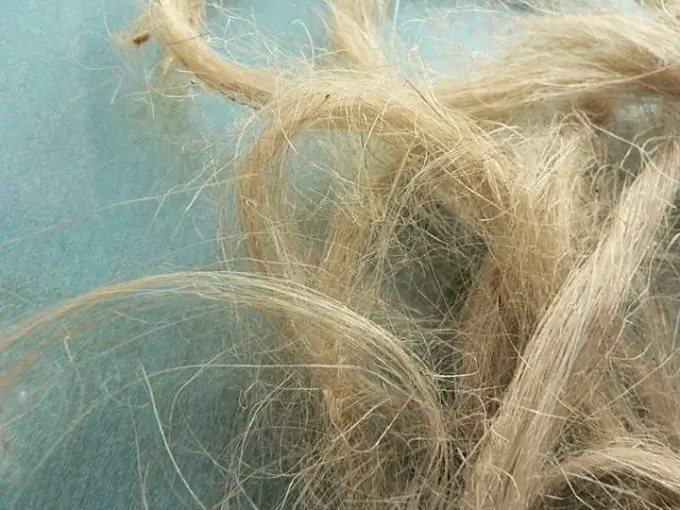Hemp is a coarse fiber that not so long ago was the most popular material for making various products. It was also called so: podkorye, loving fiber, hemp bologna.

Hemp is made from hemp. In Russia, until the middle of the twentieth century, two varieties of this plant were grown on a large scale: southern and central Russian. The first was planted mainly in the Kuban and the North Caucasus. Central Russian - in the Oryol, Penza, Bryansk regions, the Jewish Autonomous Region, Mordovia. Both varieties are high-yielding and differ only in the thickness of the stem. In southern hemp, its diameter can reach 20 mm, in Central Russian - 7-10 mm.
How was hemp made before?
Hemp is obtained from hemp stem fibers. Before mass production, peasants made it like this: large stems of a plant were placed for several years in running water for soaking, then using special machines, fibers were separated from the core of the stem and processed with different compositions in accordance with the purpose of the product.
A wide range of goods were made from hemp: fabrics (aside), ropes, ropes, fishing nets, venteri, reins, tow, sails for boats and ships, etc. Hemp fibers are the only material that does not lose its strength from contact with sea water. Therefore, fabrics, ropes and ropes made from the stems of this plant were in great demand. Since hemp is a dioecious plant, male and female plants have been used to produce hemp of varying quality. From the first, fibers were obtained that are more durable, but also coarser.
Methods for making hemp in the twentieth century
Until the middle of the twentieth century in Russia there were factories for the processing of hemp. They were used to make hemp and carry out its further processing: they received fibers for the manufacture of fabrics, paper and other products. The process of hemp production looked like this: hemp stalks were first soaked in large containers, then sent to the workshop, where they were initially beaten: separation of fibers up to 70 cm long (trusts). Further, these threads were dried in special chambers. After that, the trust was cleaned of impurities and again "ruffled". At this stage of production, yarns with a length of 175-250 mm were obtained.
Hemp fiber fabrics are highly hygroscopic and breathable, which ensures maximum comfort when wearing such clothes. Today it is ranked as elite. The reason for this is not only a sharp decline in the production of hemp fabric, but also its remarkable properties: strength, environmental friendliness, color fastness, no shrinkage, durability.







